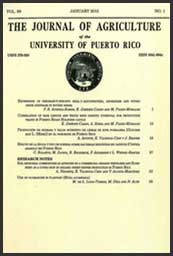Abstract
The objective of this work was to measure the effects of repeated short-term organic amendments that we termed soil treatment management cycles (STMC) on physical and biological properties of a San Antón series soil. Each STMC lasted 60 days and consisted of incorporating 5% organic matter from coffee pulp compost; the planting, growth and incorporation of an intercrop of four green manure species; and the application of mycorrhizae and compost tea. The treatments were labeled: CL0, CL1, CL2 and CL3; where CL0 was the control, CL1 received one STMC, CL2 and CL3 received two and three STMC, respectively. The STMC intended to mimic the overall effect of a sustainable agricultural system, not to measure the individual effects of the practices. All treatments (CL1, CL2, CL3) showed an increase in soil organic matter (p≤0.05). When compared to the CL0 control, saturated hydraulic conductivity increased and bulk density decreased in all soils. Soil macroporosity was significantly increased by CL2 and CL3. Soil aggregate stability increased in CL1, CL2 and CL3 plots. Microbial biomass C increased in treatment CL3, and microbial biomass N increased in CL2 and CL3. The production of stable aggregates was correlated to humic acid content and positively influenced all other physical parameters assessed in this study. The STMC had a positive impact on soil properties by increasing the soil organic matter as well as the humic acid fraction. Soil macroporosity, defined as porosity with radius > 38 µm, was significantly increased by treatments CL2 and CL3. All of the organic matter fractions, including total organic matter, humic acid content, microbial biomass C and microbial biomass N were significantly increased by one or more STMC.Downloads
Download data is not yet available.

